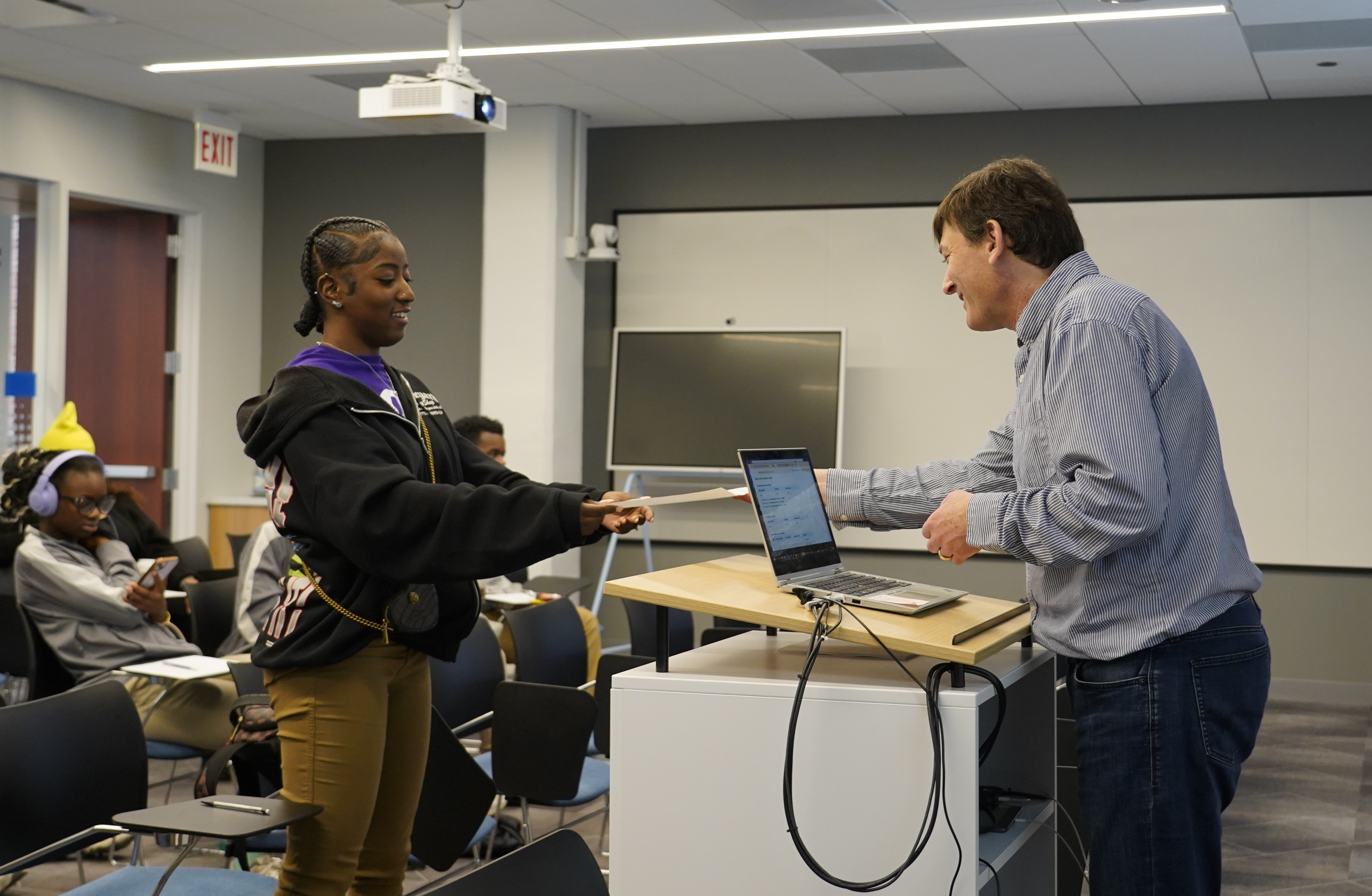2025 East-Central Indiana Business Survey open through September 19 – News at IU

Regional Economic Assessment and Sustainable Development Goals: 2025 East-Central Indiana Business Survey
1.0 Introduction
The Business and Economic Research Center (BERC) at Indiana University East, in collaboration with local economic development corporations and chambers of commerce, is conducting the 2025 annual business survey for the East-Central Indiana region. This initiative represents a multi-stakeholder partnership, aligning with Sustainable Development Goal 17 (Partnerships for the Goals), to gather crucial data for regional economic planning. The survey’s findings will be used to calculate the IU East Regional Business Confidence Index, a key metric for monitoring economic vitality and informing strategies that promote sustainable development.
2.0 Survey Objectives and Alignment with Sustainable Development Goals
The primary objective of the survey is to collect data that supports sustainable economic growth and community resilience. The results will directly contribute to the monitoring and achievement of several United Nations Sustainable Development Goals (SDGs).
- SDG 8: Decent Work and Economic Growth: The survey provides critical data for monitoring regional business sentiment and economic trends. This information assists local stakeholders in developing strategies to foster a healthy business climate, which is fundamental to creating productive employment and decent work for all.
- SDG 9: Industry, Innovation, and Infrastructure: By assessing business performance and expectations, the survey results will aid economic development groups in their strategic planning. This supports the goal of building resilient infrastructure and fostering innovation within the regional industrial sector.
- SDG 11: Sustainable Cities and Communities: The insights gained from the survey are instrumental for local chambers of commerce and development corporations in their efforts to make the region’s communities more inclusive, safe, resilient, and sustainable. A stable economic foundation is essential for community well-being.
3.0 Methodology and Scope
The survey is designed to be a confidential, 10-minute questionnaire for business owners and managers within the designated region. The methodology is as follows:
- Target Region: The survey will encompass businesses located in Fayette, Franklin, Henry, Randolph, Rush, Union, and Wayne counties.
- Survey Period: Data collection will occur from September 8, 2025, to September 19, 2025.
- Data Collection: Participants will be asked to provide general information on business demographics, current year performance, and economic expectations for the upcoming year.
- Confidentiality and Dissemination: Individual responses will remain confidential. Aggregated research results will be made public by the end of 2025 to ensure data accessibility for regional planning.
4.0 Projected Outcomes and Impact on Sustainable Development
The successful completion of the survey will yield the 2025 IU East Regional Business Confidence Index, which will be published on the BERC website. The aggregated data will serve as an empirical foundation for local and regional economic studies. Furthermore, the results will provide economic development organizations with vital information to guide strategic planning efforts aimed at enhancing the region’s economic vitality, directly supporting the long-term objectives of the Sustainable Development Goals.
5.0 Contact Information
For additional details regarding the survey, please contact:
- Name: Dr. Oi Lin (Irene) Cheung, Director
- Organization: IU East Business and Economic Research Center
- Phone: (765) 973-8497
- Email: berc@iu.edu
Analysis of Sustainable Development Goals in the Article
1. Which SDGs are addressed or connected to the issues highlighted in the article?
-
SDG 8: Decent Work and Economic Growth
The article is fundamentally about fostering economic growth. The business survey aims to “monitor the business sentiment and economic trends,” support “economic vitality,” and “facilitate a healthy business climate.” These activities are central to understanding and promoting a region’s economic health, which is the core objective of SDG 8.
-
SDG 11: Sustainable Cities and Communities
The initiative described is geographically focused on the “East-Central Indiana region,” including specific counties like Fayette, Franklin, and Wayne. The survey’s results are intended to aid “future strategic planning and economic development efforts” at a local and regional level. This directly supports the goal of making communities and regions economically sustainable and well-planned.
-
SDG 17: Partnerships for the Goals
The article explicitly highlights a multi-stakeholder partnership. The IU East Business and Economic Research Center (an academic institution) is working together with “local business communities, economic development corporations or the like, and chambers of commerce.” This collaboration between academia, the private sector, and civil society/economic development groups to achieve a common goal is a prime example of SDG 17 in action.
2. What specific targets under those SDGs can be identified based on the article’s content?
-
Target 8.3: Promote development-oriented policies that support productive activities, decent job creation, entrepreneurship, creativity and innovation, and encourage the formalization and growth of micro-, small- and medium-sized enterprises.
The survey gathers information from local businesses, which are often small and medium-sized enterprises. The data is then used to inform “strategic planning and economic development efforts,” which are the types of development-oriented policies this target aims to promote. The goal is to “facilitate a healthy business climate,” which is essential for entrepreneurship and the growth of these enterprises.
-
Target 11.a: Support positive economic, social and environmental links between urban, peri-urban and rural areas by strengthening national and regional development planning.
The project is a clear example of strengthening regional development planning. By conducting a survey across several counties in the “East-Central Indiana region,” the BERC is creating a data-driven foundation for “local and regional economic studies” and strategic planning. This effort helps create a cohesive economic strategy for the entire region.
-
Target 17.17: Encourage and promote effective public, public-private and civil society partnerships, building on the experience and resourcing strategies of partnerships.
The article describes the survey as a collaborative effort that relies on the “tremendous support from the local business communities, economic development corporations or the like, and chambers of commerce.” This partnership between a university center, private businesses, and economic groups is the exact type of effective, multi-stakeholder collaboration that Target 17.17 seeks to promote.
3. Are there any indicators mentioned or implied in the article that can be used to measure progress towards the identified targets?
-
IU East Regional Business Confidence Index
This index is a specific, measurable indicator that is directly mentioned and calculated from the survey data. It serves as a proxy indicator for Target 8.3 by quantifying “business sentiment” and “economic trends.” A rising index would suggest a healthier business climate and positive economic expectations, indicating progress towards fostering enterprise growth.
-
Use of Survey Results in Strategic Planning
The article implies an indicator for Target 11.a by stating that the survey results “might aid the aforementioned economic development corporations/groups… for consideration as part of any future strategic planning.” The extent to which this data is actually incorporated into regional economic plans would be a direct measure of progress in strengthening regional development planning.
-
Continuation and Scope of the Partnership
The article mentions that “we continued to have great success last year” and are “again working with” partners to conduct the survey. The annual continuation of this survey and the sustained participation of businesses, economic development corporations, and chambers of commerce serve as an indicator for Target 17.17. It demonstrates a durable and effective partnership.
Summary Table: SDGs, Targets, and Indicators
| SDGs | Targets | Indicators |
|---|---|---|
| SDG 8: Decent Work and Economic Growth | Target 8.3: Promote development-oriented policies that support productive activities… and encourage the formalization and growth of micro-, small- and medium-sized enterprises. | The calculated value of the “IU East Regional Business Confidence Index” to monitor business sentiment and economic trends. |
| SDG 11: Sustainable Cities and Communities | Target 11.a: Support positive economic… links… by strengthening national and regional development planning. | The use of survey results by economic development corporations and chambers of commerce for “future strategic planning and economic development efforts.” |
| SDG 17: Partnerships for the Goals | Target 17.17: Encourage and promote effective public, public-private and civil society partnerships. | The continued annual collaboration between the IU East BERC, local business communities, economic development corporations, and chambers of commerce. |
Source: news.iu.edu

What is Your Reaction?
 Like
0
Like
0
 Dislike
0
Dislike
0
 Love
0
Love
0
 Funny
0
Funny
0
 Angry
0
Angry
0
 Sad
0
Sad
0
 Wow
0
Wow
0
















































/environment-climate-change-and-health-(ech)/water-sanitation-hygiene-and-health-(wsh)/landfill-tuvalu-36092.tmb-1200v.jpg?sfvrsn=5c21fe40_1#)

.jpg.webp?itok=0ZsAnae9#)

























